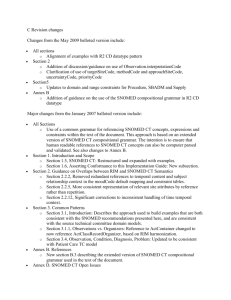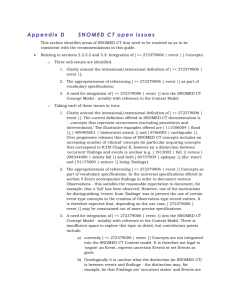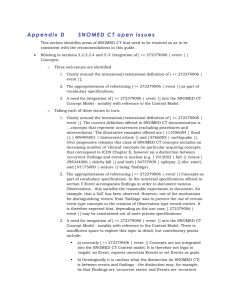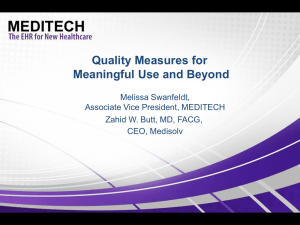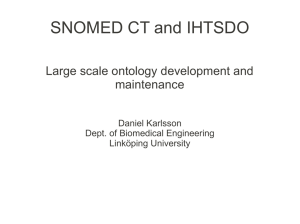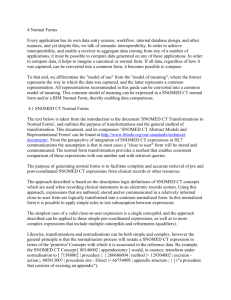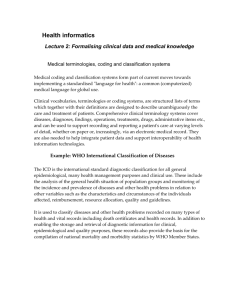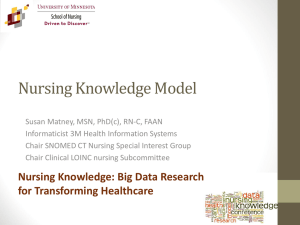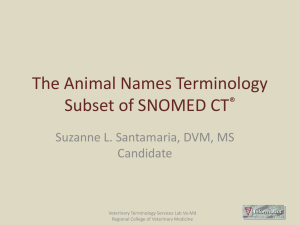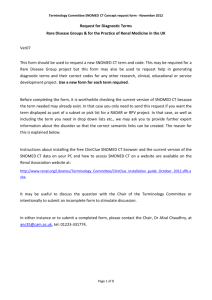TermInfo_Jan2014_Appendix_C
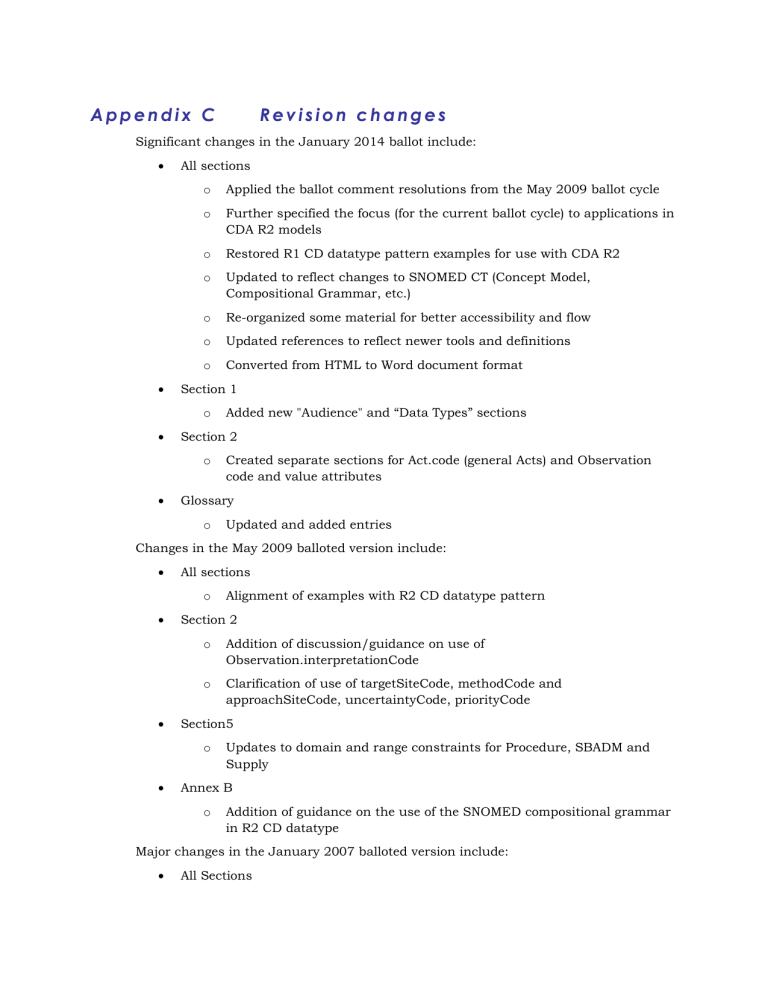
A p p e n d i x C R e v i s i o n c h a n g e s
Significant changes in the January 2014 ballot include:
All sections o Applied the ballot comment resolutions from the May 2009 ballot cycle o Further specified the focus (for the current ballot cycle) to applications in
CDA R2 models o Restored R1 CD datatype pattern examples for use with CDA R2 o Updated to reflect changes to SNOMED CT (Concept Model,
Compositional Grammar, etc.) o Re-organized some material for better accessibility and flow o Updated references to reflect newer tools and definitions o Converted from HTML to Word document format
Section 1 o Added new "Audience" and “Data Types” sections
Section 2 o Created separate sections for Act.code (general Acts) and Observation code and value attributes
Glossary o Updated and added entries
Changes in the May 2009 balloted version include:
All sections o Alignment of examples with R2 CD datatype pattern
Section 2 o Addition of discussion/guidance on use of
Observation.interpretationCode o Clarification of use of targetSiteCode, methodCode and approachSiteCode, uncertaintyCode, priorityCode
Section5 o Updates to domain and range constraints for Procedure, SBADM and
Supply
Annex B o Addition of guidance on the use of the SNOMED compositional grammar in R2 CD datatype
Major changes in the January 2007 balloted version include:
All Sections
o Use of a common grammar for referencing SNOMED CT concepts, expressions and constraints within the text of the document. This approach is based on an extended version of SNOMED CT compositional grammar. The intention is to ensure that human readable references to
SNOMED CT concepts can also be computer parsed and validated. See also changes to Annex B.
Section 1. Introduction and Scope o Section 1.5, SNOMED CT: Restructured and expanded with examples. o Section 1.6, Asserting Conformance to this Implementation Guide: New subsection.
Section 2. Guidance on Overlaps between RIM and SNOMED CT Semantics o Section 2.2.2, Removed redundant references to temporal content and subject relationship context in the moodCode default mapping and constraint tables. o Section 2.2.5, More consistent representation of relevant site attributes by reference rather than repetition. o Section 2.2.12, Significant corrections to inconsistent handling of time temporal context.
Section 3. Common Patterns o Section 3.1, Introduction: Describes the approach used to build examples that are both consistent with the SNOMED recommendations presented here, and are consistent with the source technical committee domain models. o Section 3.1.1, Observations vs. Organizers: Reference to ActContainer changed to now reference ActClassRecordOrganizer, based on RIM harmonization. o Section 3.4, Observation, Condition, Diagnosis, Problem: Updated to be consistent with Patient Care TC model
Annex B. References o New section B.3 describing the extended version of SNOMED CT compositional grammar used in the text of the document.
Annex D. SNOMED CT Open Issues o New SNOMED CT open issue in relation to 'Events and Conditions' o New SNOMED CT open issue in relation to identifying those SNOMED CT codes suitable for Act.code where Observation.value is a SNOMED CT finding.
Annex E. Detailed aspects of issues with a vocabulary specification formalism o Clarification of the definition of 'subsumption'.
Page 2 HL7 V3 IG: TermInfo - Using SNOMED CT in CDA R2 Models, Release 1
© 2013 Health Level Seven International. All rights reserved. January 2014
